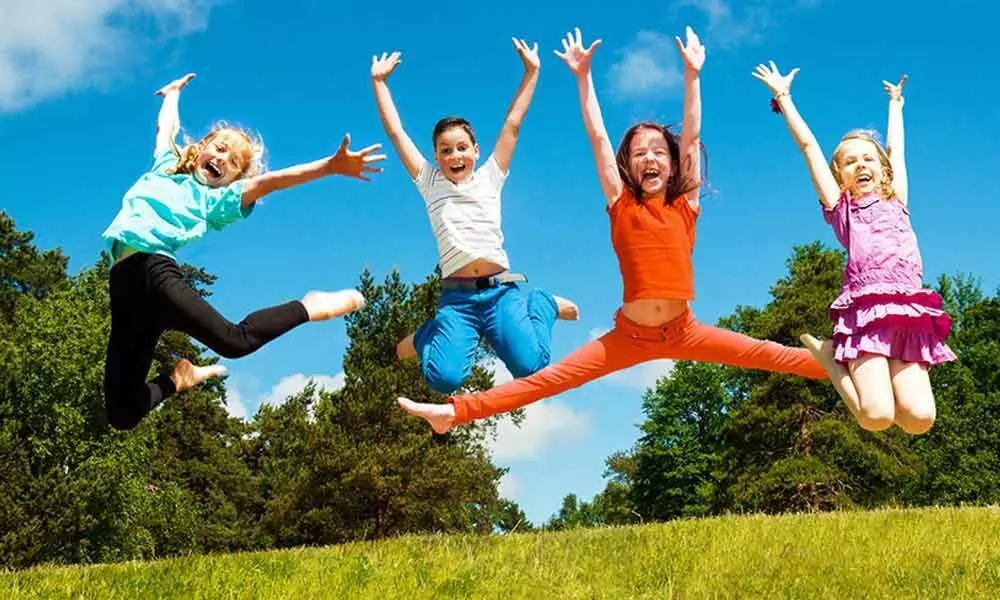Live
- Belagavi meet is Jai Bapu-Jai Bhim-Jai Samvidhan convention
- Four Karnataka soldiers martyred in J&K Army vehicle accident
- Madhya Pradesh to translocate 14 tigers to Gujarat, Chhattisgarh, Odisha
- Shiva Rajkumar gets cancerous bladder removed in US
- Modi: Ambedkar's vision neglected by Congress
- With holiday mood on a high, hotel room demand peaks in Hampi
- Vajpayee’s statue unveiled in Berhampur
- Bengal school job case: Special court hearing today to monitor progress of framing charges
- CM, Naveen pay tributes to Vajpayee
- Freedom fighter, veteran CPI leader R. Nallakannu turns 100 today
Just In

Research proves all work and no play make kids dull.
Washington: A new study reveals that school students who take part in physical activity participation like star jumps or running on the spot during lessons tend to perform better in tests than their fellow classmates, who stick to sedentary learning.
According to the findings published in the British Journal of Sports Magazine, this approach to involve students in physical activities has been adopted by schools seeking to increase activity levels among students without reducing academic teaching time.
Typical activities include using movement to signify whether a fact is true or false or jumping on the spot a certain number of times to answer a maths question.
According to study, incorporating physical activity had a large, significant effect on educational outcome during the lesson, assessed through tests or by observing pupil's attention to a given task, and a smaller effect on overall educational outcomes, as well as increasing the students' overall levels of physical activity.
"Physical activity is good for children's health, and the biggest contributor of sedentary time in children's life is the seven or eight hours a day they spend in classrooms," said lead author Dr Emma Norris of UCL Centre for Behaviour Change, UCL Psychology and Language Sciences.
"Physically active lessons are a useful addition to the curriculum. They can create a memorable learning experience, helping children to learn more effectively," Norris added.
Co-author Dr Tommy van Steen, Leiden University, the Netherlands, said: "These improvements in physical activity levels and educational outcomes are the results of quite basic physical exercises. Teachers can easily incorporate these physically active lessons in the existing curriculum to improve the learning experience of students."
For the study, researchers looked at data from 12,663 students aged between three and 14. Nearly half of the studies took place in the United States, with seven conducted in Australia, five in the UK, four in the Netherlands and one in China, Croatia, Ireland, Israel, Portugal and Sweden.
In one of the 42 studies that were analysed, eight-and nine-year-olds simulated travelling the world by running on the spot in between answering questions relating to different countries.
Researchers concluded that the children were more active and more focused on the task than peers in a control group, following teachers' instructions more closely.
In another study in the Netherlands, primary school children who took part in physically active lessons three times a week over two years made significantly better progress in spelling and mathematics than their peers -- equating to four months of extra learning gains.

© 2024 Hyderabad Media House Limited/The Hans India. All rights reserved. Powered by hocalwire.com







